| Recent Featured Videos and Articles | Eastern “Orthodoxy” Refuted | How To Avoid Sin | The Antichrist Identified! | What Fake Christians Get Wrong About Ephesians | Why So Many Can't Believe | “Magicians” Prove A Spiritual World Exists | Amazing Evidence For God | News Links |
| Vatican II “Catholic” Church Exposed | Steps To Convert | Outside The Church There Is No Salvation | E-Exchanges | The Holy Rosary | Padre Pio | Traditional Catholic Issues And Groups | Help Save Souls: Donate |  |
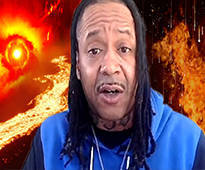
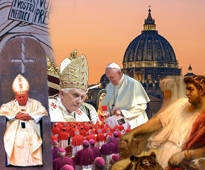
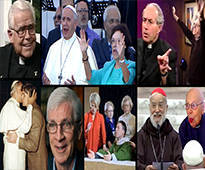
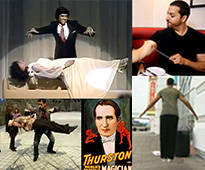
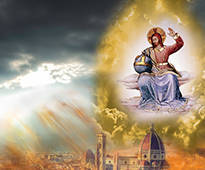

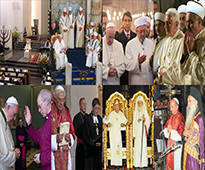


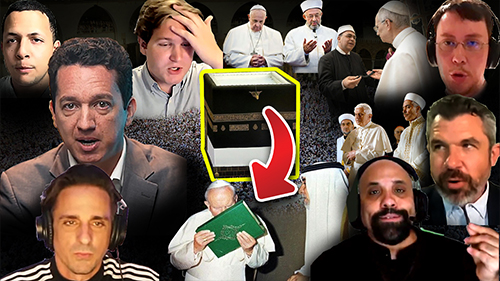 " />
" /> " />
" /> " />
" />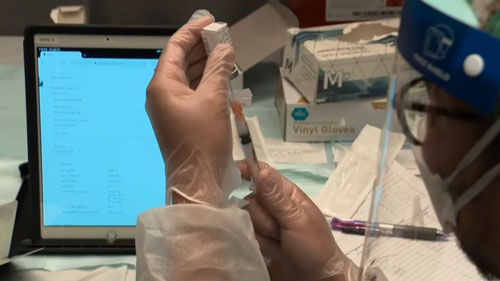 " />
" /> " />
" />




The Great Western Schism (1378-1417) and what it teaches us about the post-Vatican II apostasy
The Great Western Schism (1378-1417) and what it teaches us about the post-Vatican II apostasy [PDF]
-Massive confusion, multiple antipopes, antipopes in Rome, an antipope recognized by all the cardinals; The Great Western Schism proves that a line of antipopes at the heart of the post-Vatican II crisis is absolutely possible-
The Breakdown of the Great Western Schism
Antipopes
The Popes
Urban VI (1378-1389)
↓
Boniface IX (1389-1404)
↓
Innocent VII (1404-1406)
↓
Gregory XII (1406-1415) The least supported pope in history, least recognized of the three claimants, rejected by almost all of Christendom
Avignon Line
Clement VII (1378-1394) recognized by all the living cardinals who had elected Urban VI
↓
Benedict XIII (1394-1417) recognized by St. Vincent Ferrer for a time
Pisan Line
*line favored by most theologians of the time, elected by cardinals from both camps*
Alexander V (elected by cardinals at Pisa) 1409-1410
↓
John XXIII (1410-1415) reigned in Rome, had widest support of three claimants
Resolved with the election of Pope Martin V, 1417 at the Council of Constance
How it all happened
The conclave in the Vatican (1378) after Pope Gregory XI’s death was the first to meet in Rome since 1303. The popes had resided in Avignon for approximately 70 years due to political turmoil. The conclave was held amid scenes of unprecedented uproar.[1] Since France had become the home of the popes for the last 70 years, the Roman mob surrounding the conclave was quite unruly and clamored for the cardinals to elect a Roman, or at least an Italian. At one point, when it was believed that a Frenchman had been elected instead of an Italian, the mob stormed the palace:
Eventually an Italian, Pope Urban VI, was elected by 16 cardinals. The new pope asked the cardinals if they had elected him freely and canonically; they said they had. Shortly after the election, the 16 who had elected Urban VI wrote to the six cardinals who had remained stubbornly in Avignon:
CARDINALS REJECT POPE URBAN VI UNDER PRETEXT OF THE UNRULY ROMAN MOB
Shortly after his election, however, Pope Urban VI began to alienate the cardinals.
One by one the cardinals went to Anagni in France to vacation. “The new pope, suspecting nothing, had given them permission to go there for the summer. In mid-July, while writing a letter to Urban assuring him of their loyalty, they agreed among themselves that the April election had been invalid due to duress by the surrounding mob and that, using this as a reason, they would withdraw recognition from Urban.”[5]
After the news of the cardinals’ decision to repudiate Urban VI had been circulated, the canonist Baldus, considered the most famous jurist of the day, published a treatise disagreeing with their decision. In it, he stated:
Despite the imprecision in this statement by Baldus – for a true pope can never be deposed; a heretic deposes himself – we can clearly see in his words the commonly acknowledged truth that a claimant to the Papacy who is openly and persistently heretical can be rejected as a non-pope, since he is outside the Church.
ALL LIVING CARDINALS REJECT URBAN VI AND RECOGNIZE AN ANTIPOPE
On July 20, 1378, 15 of the 16 cardinals who had elected Pope Urban VI withdrew from his obedience on the grounds that the unruly Roman mob had made the election uncanonical. The one cardinal who did not repudiate Pope Urban VI was Cardinal Tebaldeschi, but he died shortly thereafter, on Sept. 7 – leaving a situation where not one of the cardinals of the Catholic Church recognized the true pope, Urban VI. All of the living cardinals now regarded his election as invalid.[7]
After repudiating Urban VI, on Sept. 20, 1378, the cardinals proceeded to elect Clement VII as “pope,” who set up his rival “Papacy” in Avignon. The Great Schism of the West had begun.
Even though the validity of the election of Urban VI was ascertainable, one can see why many were taken in by the argument that the Roman mob had unlawfully influenced his election, thereby rendering it uncanonical. Moreover, one can see how the position of Antipope Clement VII was strengthened considerably and imposingly in the eyes of many by the fact that 15 out of the 16 cardinals who had elected Urban VI came to repudiate his election as invalid. The situation that resulted after Antipope Clement VII’s acceptance by the cardinals was a nightmare, a nightmare from the very beginning – a nightmare which shows us how bad and confusing God will sometimes allow things to get, without violating the essential promises He made to His Church:
“The schism was now an accomplished fact, and for forty years Christendom was treated with the melancholy spectacle of two and even three rival popes claiming its allegiance. It was the most perilous crisis through which the Church had ever passed. Both popes declared a crusade against each other. Each of the popes claimed the right to create cardinals and to confirm archbishops, bishops, and abbots, so that there were two Colleges of Cardinals and in many places two claimants for the high positions in the Church. Each pope attempted to collect all the ecclesiastical revenues, and each excommunicated the other with all his adherents.”[9]
The spectacle continued as popes and antipopes alike died, only to be succeeded by more. Pope Urban VI died in 1389, and was succeeded by Pope Boniface IX who reigned from 1389 to 1404. After Boniface IX’s election, he was promptly excommunicated by Antipope Clement VII, and he responded by excommunicating him.
During his reign, Pope Boniface IX “was unable to enlarge his sphere of influence in Europe; Sicily and Genoa actually fell away from him. To prevent the spread of Clementine support in Germany he showered favors on the German king Wenceslas…”[10]
CARDINALS OF BOTH CAMPS TAKE AN OATH TO WORK TO END THE SCHISM PRIOR TO PARTICIPATING IN NEW ELECTIONS, WHICH DEMONSTRATES HOW BAD THE SITUATION HAD BECOME
Meanwhile, at Avignon, Antipope Clement VII died in 1394. Before electing Antipope Clement VII’s successor, all 21 cardinals “swore to work for the elimination of the schism, each undertaking, if elected, to abdicate if and when the majority judged it proper.”[11] Keep this in mind, as it will become relevant when we cover why a third claimant to the Papacy came into the picture.
The cardinals at Avignon proceeded to elect Pedro de Luna, (Antipope) Benedict XIII, to succeed Antipope Clement VII. Benedict XIII reigned as the Avignon claimant for the rest of the schism. For some time, Benedict XIII had in his support none other than the miracle-working Dominican, St. Vincent Ferrer. St. Vincent actually served as his confessor for a time,[12] believing the Avignon line to be the valid line (until some time later on in the schism). St. Vincent had obviously been persuaded that Pope Urban VI’s election was invalid due to the unruly Roman mob, in addition to the formidable acceptance of the Avignon line by 15 out of the 16 cardinals who had taken part in Urban VI’s election.
As a cardinal, Antipope Benedict XIII had originally taken part himself in the election of Pope Urban VI, and then abandoned Urban and helped elect Clement (having, of course, been convinced that Urban’s election was invalid). As a cardinal under Antipope Clement VII, Benedict XIII “went to the Iberian peninsula for eleven years as his legate, and by his diplomacy swung Aragon, Castile, Navarre, and Portugal to his [Antipope Clement VII’s] obedience.”[13]
After having sworn to pursue the path of abdication in order to end the schism if the majority of his cardinals agreed, Antipope Benedict XIII alienated many of his cardinals when he went back on his promise and showed himself unwilling to consider abdication, even though the majority of his cardinals wanted him to. His rival, Pope Boniface IX, was equally unwilling.
In 1404, Pope Boniface IX (the successor to Urban VI) died, and Pope Innocent VII was elected as his successor by the eight cardinals available. Pope Innocent VII didn’t live long, however; he died just two years later, in 1406. During his short reign, Innocent VII had remained opposed to meeting with the Avignon claimant, Benedict XIII, despite having taken an oath before his election to do everything in his power to end the schism, including abdication if necessary.
As the schism persisted, members of both camps became increasingly frustrated with both claimants’ unwillingness to take effective measures to end the schism.
In accordance with this widespread sentiment to take effective action to end the schism, another oath was taken before the election of Pope Innocent VII’s successor.
The very fact that the cardinals preparing to elect a true pope took an oath such as this – which included negotiations with an antipope – shows how horrible the situation was during the schism, and how much support the antipope had in Christendom.
The conclave proceeded to elect Pope Gregory XII on Nov. 30, 1406. Hope that the end of the schism would come was renewed by Pope Gregory XII’s negotiations with Antipope Benedict XIII. The two even agreed on a place to meet, but Pope Gregory XII wavered; he feared (and rightly so) the sincerity of Antipope Benedict XIII’s intentions. Pope Gregory XII was also influenced against the path of resignation by some of his close relatives, who painted a negative picture of what might happen if he resigned.
CARDINALS FROM BOTH CAMPS GET FED UP, GO TO PISA AND ELECT A NEW “POPE” IN AN IMPRESSIVE CEREMONY WITH CARDINALS FROM BOTH SIDES
The 14 cardinals who left Pope Gregory XII’s obedience and fled to Pisa were joined there by 10 cardinals who left Antipope Benedict XIII’s obedience. The cardinals from the two camps had arranged a council, and were resolved to end the schism by means of a joint election at Pisa
The Cardinal Archbishop of Milan gave the opening address at Pisa. He condemned both claimants, Gregory XII and (Antipope) Benedict XIII, and formally summoned them to appear at the council. They were declared contumacious when they did not appear.
It must be stressed that, at this point in the schism (1409), people were so exasperated with the enduring disunion and the broken promises of the two claimants that the assembly at Pisa was widely received and supported. It was made all the more impressive and appealing by the fact that its 24 cardinals were comprised of a substantial number of cardinals who had been part of both camps [Gregory XII and Antipope Benedict XIII]. This gave it the appearance of a united action of the Church’s cardinals. On June 29, 1409, the 24 cardinals unanimously elected Alexander V. Now there were three claimants to the Papacy at the same time.
THE THIRD CLAIMANT, THE PISAN ANTIPOPE, HELD THE WIDEST SUPPORT AND THE BACKING OF MOST OF THE THEOLOGIANS BECAUSE HE HAD APPEARANCE OF BEING THE UNITED CHOICE OF CARDINALS FROM BOTH CAMPS
The newly elected Pisan antipope, Alexander V, had the widest support in Christendom among the three claimants. The true pope, Gregory XII, had the least.
Most of the learned theologians and canonists of the time favored the Pisan line of antipopes.
NO TRUE POPE IN HISTORY HAD AS LITTLE SUPPORT AS POPE GREGORY XII NEAR THE END OF THE GREAT WESTERN SCHISM
In 1411, the newly elected Holy Roman Emperor Sigismund followed the general sentiment and abandoned the true pope, Gregory XII.
The newly elected Pisan antipope, Alexander V, didn’t live long. He died less than a year after his election, in May of 1410. To succeed him, on May 17, 1410, the Pisan cardinals unanimously elected Baldassare Cossa as John XXIII. Like his predecessor Antipope Alexander V, John XXIII also held the widest support among the three claimants.
As we see, Antipope John XXIII was able to reign in Rome. John XXIII (1410-1415) would be the last antipope to reign from Rome, until the Vatican II apostasy, which began with a man who also called himself John XXIII (Angelo Roncalli, 1962-1965).
During the 4th year of his reign as antipope, Antipope John XXIII summoned the Council of Constance in 1414, at the insistence of the Emperor Sigismund. It’s quite interesting to note that the recent John XXIII also called Vatican II in the 4th year of his reign, 1962. And like Vatican II, the Council of Constance began as a false council, having been called by an antipope.
At this point in the schism, the Emperor Sigismund was determined to unite Christendom by working for the abdication of all three claimants. When Antipope John XXIII realized that he would not be accepted as the true pope at the Council of Constance, he fled from the council. “That evening Cossa fled Constance, riding on a small dark horse (in contrast to the nine white horses behind which he had entered the city in October), huddled in a large gray cloak wrapped round and round him to hide most of his face and body…”[22]
Antipope John XXIII was then formally condemned by the council as deposed. An order was sent out by the Emperor for his arrest; he was apprehended and thrown into prison. In prison, Antipope John XXIII “surrendered his papal seal and the fisherman’s ring, with tears, to representatives of the council.” He accepted the verdict against him without protest.[23]
“When the Council of Constance (reckoned in part or whole the Sixteenth General, 1414-1417)… had deposed John, it entered into negotiations with Gregory, who conveyed to it his willingness to abdicate provided he was allowed formally to convoke the assembled prelates and dignitaries afresh as a general council; as pope he could not recognize one called by John. This procedure was accepted, and at the 14th solemn session, on 4 July 1415, his cardinal John Dominici read out his bull convoking the council, whereupon Carlo Malatesta [Pope Gregory XII] announced his resignation. The two colleges of cardinals were united, Gregory’s acts in his pontificate were ratified…”[24]
So, after Antipope John XXIII was deposed, Pope Gregory XII agreed to convoke the Council of Constance (in order to confer upon it Papal legitimacy, which Antipope John XXIII could not give it) and then resign in the hope of ending the schism.
Meanwhile, Antipope Benedict XIII (the Avignon claimant) had been approached by Emperor Sigismund and asked to resign. He obstinately refused to the end, but by now the general sentiment had gone so far against him that his following was greatly diminished.
Both antipopes having been disposed of, and the true pope having resigned, the Council of Constance proceeded to elect Pope Martin V on Nov. 11, 1417, bringing an official end to the Great Western Schism. (The Avignon line of antipopes did continue after the death of Antipope Benedict XIII with the election of Antipope Clement VIII as his successor by his four remaining cardinals. These cardinals then regarded that election of Antipope Clement VIII invalid and elected Antipope Benedict XIV; but by the time of the deposition of Antipope Benedict XIII by the Council of Constance the Avignon line had lost so much support that these final two successors to Antipope Benedict XIII are so insignificant as to merit only a footnote.)
CONCLUSION: WHAT THE GREAT WESTERN SCHISM TEACHES US FOR OUR TIME
In this article we have reviewed one of the important chapters in Church history. In the process we have seen a number of very important things – things quite relevant to our present situation.
• We’ve seen that antipopes can exist.
• We’ve seen that antipopes can reign from Rome.
• We’ve seen that all of the living cardinals, shortly after the election of Pope Urban VI, repudiated him (the true pope) and recognized Antipope Clement VII. This illustrates that it’s not at all incompatible with indefectibility (i.e., the promises of Christ to be with His Church and the Papacy until the end of time) for all the cardinals to recognize an antipope.
• We’ve seen that most of the theologians of the time favored the third line, the Pisan line of antipopes. This line of antipopes must have seemed like an attractive option for many because cardinals from both camps supported it. This shows us how deceptive God will sometimes allow things to get without violating the essential promises He made to His Church. Moreover, the majority of theologians’ support for the Pisan line demonstrates clearly that the common teaching of theologians on a particular matter (e.g., salvation), no matter how learned they are, is not binding, contrary to what some are asserting today.
• We’ve also seen that the principle that an open heretic cannot be regarded as the pope is ancient and was expressed by the leading canonist of the time, Baldus.
• We’ve seen that things were so bad and so desperate during the Great Western Schism that people didn’t see any way out of this disaster – a disaster in which people were offered, at one point, three rival bishops, three rival religious superiors, and three rival claimants to the Papacy excommunicating one another.
• Learning this can help us see clearly that what we have proven on doctrinal grounds, namely, that there has been a line of antipopes since Vatican II that has foisted upon the world a new counterfeit religion, which has reduced the true Catholic Church to a remnant (in fulfillment of Scriptural and Catholic prophecies about the deception of the Great Apostasy and the last days), is not a PATENT ABSURDITY, as some have wrongly said.
On the contrary, if God allowed the aforementioned disaster to occur during the Great Western Schism (which could have been, at worst, just a prelude to the Great Apostasy), with multiple antipopes reigning at once and the true pope the weakest of the three, what kind of disaster and deception would He allow with antipopes (without ever violating the essential promises He made to His Church) during the final spiritual tribulation, which will be the most deceptive of them all? It is a PATENT ABSURDITY, and directly refuted by Catholic teaching and the facts of Church history, to assert that a line of antipopes which has created a counterfeit sect to oppose the true Church is an impossibility. Further, it is outrageous in the extreme to assert that such a situation is “patently absurd” after having reviewed the undeniable facts we have put forward to prove it true.
I will end this article by quoting Fr. Edmund James O’Reilly, S.J. He had some very interesting things to about the Great Western Schism in his book The Relations of the Church to Society – Theological Essays, written in 1882. In the process he mentions the possibility of a papal interregnum (a period without a pope) covering the whole period of the Great Western Schism (almost 40 years).
We begin with a quote from Father O’Reilly’s discussion of the Great Western Schism.
Fr. O’Reilly says that an interregnum (a period without a pope) covering the whole period of the Great Western Schism is by no means incompatible with the promises of Christ about His Church. The period Fr. O’Reilly is speaking of began in 1378 with the death of Pope Gregory XI and ended essentially in 1417 with the election of Pope Martin V. That’s a thirty-nine year interregnum!
Writing after the First Vatican Council, it is obvious that Fr. O’Reilly is on the side of those who, in rejecting Antipopes John XXIII, Paul VI, John Paul I, John Paul II and Benedict XVI, hold the possibility of a long-term vacancy of the Holy See. In fact, on page 287 of his book Fr. O’Reilly gives this prophetic warning:
Fr. O’Reilly is saying that if the Great Western Schism had never occurred people would say that such a situation is impossible and incompatible with the promises of Christ to His Church, and that we cannot dismiss the possibility of similar and perhaps worse things in the future because they would be distressing in a very high degree.
APPENDIX: CATHOLIC TEACHING THAT A HERETIC CANNOT BE A TRUE POPE
(This article may be quoted, spread and copied but the author’s name or our website: www.mostholyfamilymonastery.com must be given. Copyright, Most Holy Family Monastery, 2006.)
[1] J.N.D. Kelly, Oxford Dictionary of Popes, Oxford University Press, 1986, p. 227.
[2] Warren H. Carroll, A History of Christendom, Vol. 3 (The Glory of Christendom), Front Royal, VA: Christendom Press, p. 429.
[3] Warren H. Carroll, A History of Christendom, Vol. 3 (The Glory of Christendom), p. 431.
[4] Fr. John Laux, Church History, Rockford, IL: Tan Books, p. 404.
[5] Warren H. Carroll, A History of Christendom, Vol. 3 (The Glory of Christendom), pp. 432-433.
[6] Quoted by Warren H. Carroll, A History of Christendom, Vol. 3 (The Glory of Christendom), p. 433.
[7] Warren H. Carroll, A History of Christendom, Vol. 3 (The Glory of Christendom), pp. 432-434.
[8] Fr. John Laux, Church History, p. 404.
[9] Fr. John Laux, Church History, p. 405.
[10] J.N.D. Kelly, Oxford Dictionary of Popes, p. 231.
[11] J.N.D. Kelly, Oxford Dictionary of Popes, p. 232.
[12] Fr. Andrew Pradel, St. Vincent Ferrer: The Angel of the Judgment, Tan Books, 2000, p. 39.
[13] J.N.D. Kelly, Oxford Dictionary of Popes, p. 237.
[14] Fr. John Laux, Church History, p. 405.
[15] J.N.D. Kelly, Oxford Dictionary of Popes, p. 235.
[16] J.N.D. Kelly, Oxford Dictionary of Popes, p. 235.
[17] Warren H. Carroll, A History of Christendom, Vol. 3 (The Glory of Christendom), p. 472.
[18] Warren H. Carroll, A History of Christendom, Vol. 3 (The Glory of Christendom), pp. 473-474.
[19] Warren H. Carroll, A History of Christendom, Vol. 3 (The Glory of Christendom), p. 471.
[20] Warren H. Carroll, A History of Christendom, Vol. 3 (The Glory of Christendom), p. 479.
[21] J.N.D. Kelly, Oxford Dictionary of Popes, p. 238.
[22] Warren H. Carroll, A History of Christendom, Vol. 3 (The Glory of Christendom), p. 485.
[23] Warren H. Carroll, A History of Christendom, Vol. 3 (The Glory of Christendom), p. 487.
[24] J.N.D. Kelly, Oxford Dictionary of Popes, p. 236.
[25] Fr. John Laux, Church History, p. 408.
[26] Fr. James Edmund O’Reilly, The Relations of the Church to Society – Theological Essays.
[27] Fr. James Edmund O’Reilly, p. 287.
Sign up for our free e-mail list to see future vaticancatholic.com videos and articles.
Recent Content
^